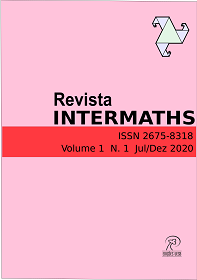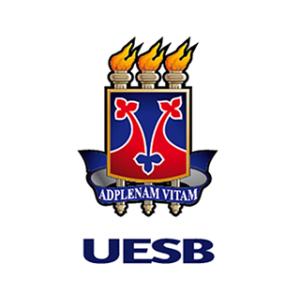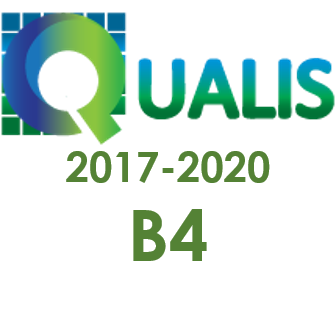Mathematical modeling for the study of affine function: a possibility of learning from the water bill
DOI:
https://doi.org/10.22481/intermaths.v1i1.7607Keywords:
Mathematical Modeling, Affine Function, Theory of Semiotic Representation RecordsAbstract
The present work aims to present the results of a research carried out with 1st year high school students from a public school in the city of Ituiutaba – MG, which sought to investigate the potential and limitations of a teaching intervention based on the account analysis of water from these students, following the assumptions of Mathematical Modeling and Theory of Semiotic Representation Records. The qualitative and quantitative study included the participation of 30 students who, during sixteen meetings, carried out activities that made it possible to model water consumption in homes in the municipality of Ituiutaba. The proposed tasks were based on the possibility of using cognitive activities of conversion and treatment, related to Raymond Duval's theory. Given the records presented, it was evident that in activities with treatment of numerical records, students performed better than using the conversion of records. It was also diagnosed that the transition from the algebraic register to the graphic register of the mathematical object (affine function), presents a difficulty for students. In another perspective, students began to have a critical attitude based on the results found, to the point of discovering that different rates are charged in the municipality depending on the neighborhood, and that, for the first range of consumption, the individual who obtained a lower real consumption , pays the same amount as the one who consumed more.
Downloads
Metrics
References
J C. Barbosa, Modelagem na educação matemática: uma perspectiva, in: Encontro Paranaense de Modelagem em Educação Matemática, 1, 2004b, Londrina, Anais, UEL, Londrina, 2004, 1 CD-ROM.
R. C. Bassanezi, Ensino-aprendizagem com modelagem matemática: uma nova estratégia, Contexto, São Paulo, 2002.
M. A. V. Bicudo, Pesquisa Qualitativa e pesquisa qualitativa segundo a abordagem fenomenológica, in: M. C. Borba, J. L. Araujo, Pesquisa qualitativa em educação matemática, Autêntica, Belo Horizonte, 2004, pp. 99-112.
M. S. Biembengut, Modelagem matemática & implicações no ensino-aprendizagem de matemática, Furb, Blumenau, 1999.
M. S. Biembengut, N. Hein, Modelagem matemática no ensino, 5. ed., Contexto, São Paulo, 2009.
C. E. P. Brumano, A modelagem matemática como metodologia para o estudo de análise combinatória, 2014.
J. W. Creswell, Projeto de pesquisa: métodos qualitativo, quantitativo e misto, Trad. M. Lopes, Artmed, Porto Alegre, 2010.
U. D’Ambrosio, Da realidade à ação: reflexões sobre educação e matemática, Ed. Universidade Estadual de Campinas, Campinas, 1986.
R. Duval, Registros de representações semióticas e funcionamento cognitivo da compreensão em matemática, in: S. D. A. Machado, Aprendizagem em matemática: registros de representação semiótica, Papirus, Campinas, 2003, pp. 11-33.
R. Duval, Semiosis y pensamiento humano: registros semióticos y aprendizajes intelectuales, Trad. M. V. Reestrepo, Peter Lang, Universidade Del Valle, 2004.
R. Duval, Diferenças semânticas e coerência matemática: introdução aos problemas de congruência, Trad. M. T. Moretti, Revemat: Revista Eletrônica de Educação Matemática, 7 (2012) 1, 97-117.
R. Duval, Registros de representação semiótica e funcionamento cognitivo do pensamento, Trad. M. T. Moretti, Revemat: Revista Eletrônica de Educação Matemática, 7 (2012) 2, 266-297.
O. Fachin, Fundamentos da metodologia, Saraiva, São Paulo, 2005.
P. Freire, Pedagogia da autonomia: saberes necessários a prática educativa, 30. ed., Paz e Terra, São Paulo, 2004.
G. Granger, A razão, 2. ed., Difusão Europeia do Livro, São Paulo, 1969.
Brasil, Parâmetros Curriculares Nacionais – Terceiro e Quarto Ciclos do Ensino Fundamental – Matemática, Ministério da Educação e do Desporto – Secretaria de Educação Fundamental, Brasília, 1998.
C. C. Prodanov, E. C. Freitas, Metodologia do trabalho científico: métodos e técnicas da pesquisa e do trabalho acadêmico, 2. ed., Feevale, Novo Hamburgo, 2013.
Downloads
Published
How to Cite
Issue
Section
License
Copyright (c) 2020 INTERMATHS: Journal Applied and Interdisciplinary Mathematics

This work is licensed under a Creative Commons Attribution 4.0 International License.
- Responsibility: The scientific content and the opinions expressed in the manuscript are the sole responsibility of the author(s).
- Copyrights: INTERMATHS.
- All content of Revista INTERMATHS/INTERMATHS journal is licensed under a Creative Commons - Atribuição 4.0 Internacional







